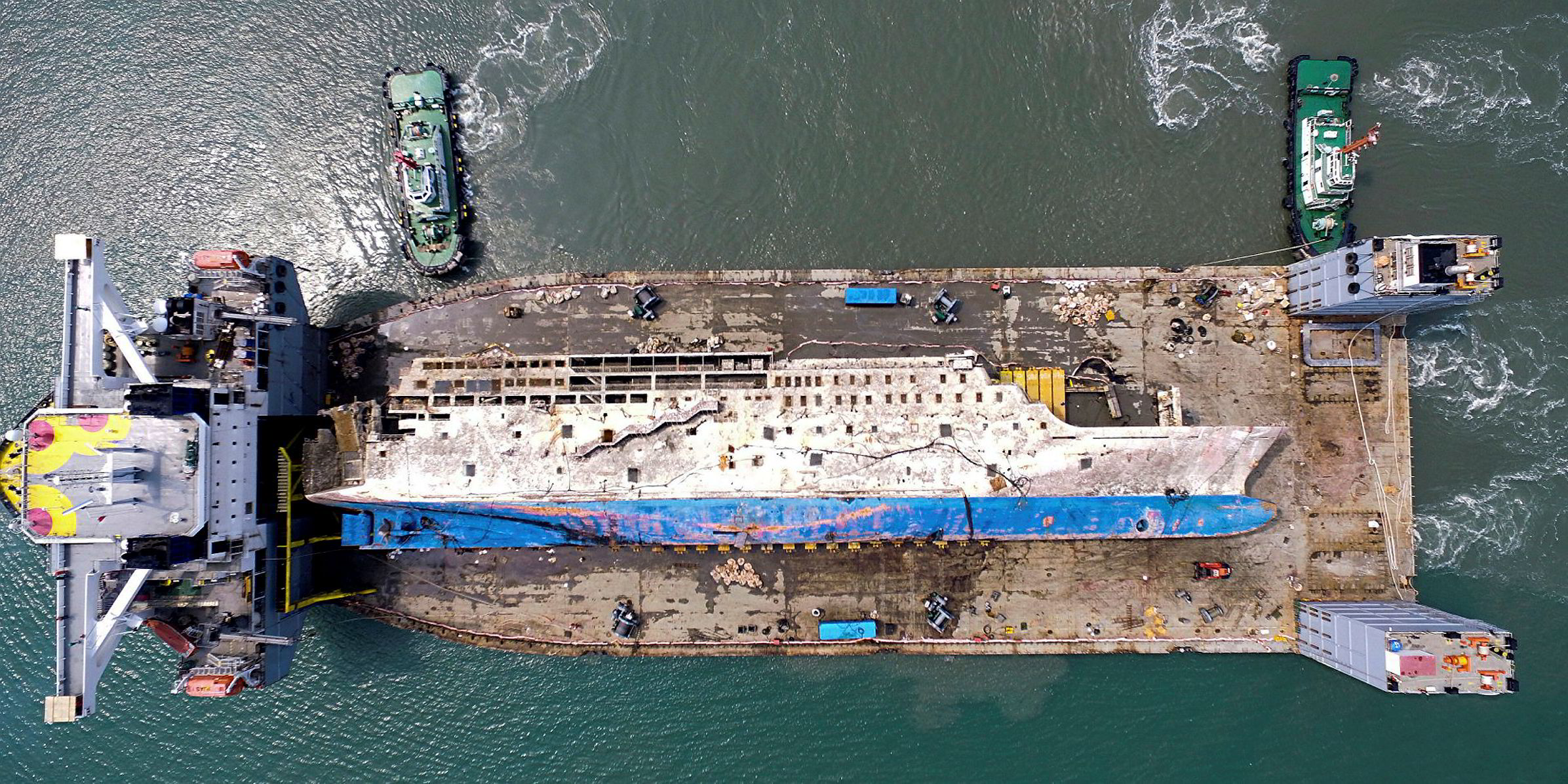The 6,825-ton passenger ferry Sewol (built 1994) sank on 16 April 2014 off the coast of South Korea in a tragedy that claimed 304 lives, most of which were high school children on an educational trip.
Just prior to the anniversary, the wreck was last week returned to the port of Mokpo.
It marked the completion of the remarkable and near-two-year-long wreck-removal operation.
Similar to the Costa Concordia wreck removal off the coast of the Italian island of Giglio, salvors were told the priority was to preserve the wreck of the Sewol in the hope of recovering nine missing bodies and as a mark of respect given the public anger following the tragedy.
The result was that costs were pushed higher compared to what many salvage experts said could be a relatively simple and much cheaper operation if the wreck of the Sewol was cut up as it lay and then recovered.
The contract was awarded in July 2015 to a Chinese consortium headed by Shanghai Salvage, with a figure of $74m widely reported as the price.
The South Korean government was closely advised throughout by London-based salvage consultants TMC Marine.
A target of a year was set to recover the wreck but there were suggestions that Korea's Ministry of Oceans and Fisheries was being too optimistic. In the end, the operation was hit by delays, partly as a result of the complicated nature of the job but also because of the difficult waters in the region.
The key to the salvage operation was to construct steel beams underneath the vessel that would support the fragile hull as it was lifted and to preserve the wreck.
The wreck was lifted from a depth of 40 metres (130 feet) through the use of cables from two barges located on either side.
After months of painstaking preparation, it took just two days to lift the wreck onto the 72,150-dwt semi-submersible ship Dockwise White Marlin (built 2015).
However, while the wreck-removal operation was seen as a success in terms of preserving the hull of the vessel, the public's reaction to the tragedy remains strong.
An accident investigation concluded that the incident occurred due to the overloading of the vessel and instability caused by an earlier conversion job to increase its capacity.
Thousands of protestors gathered in Seoul, Korea’s capital, the day before the third anniversary of the accident to call for justice for the victims of the tragedy and their families.



